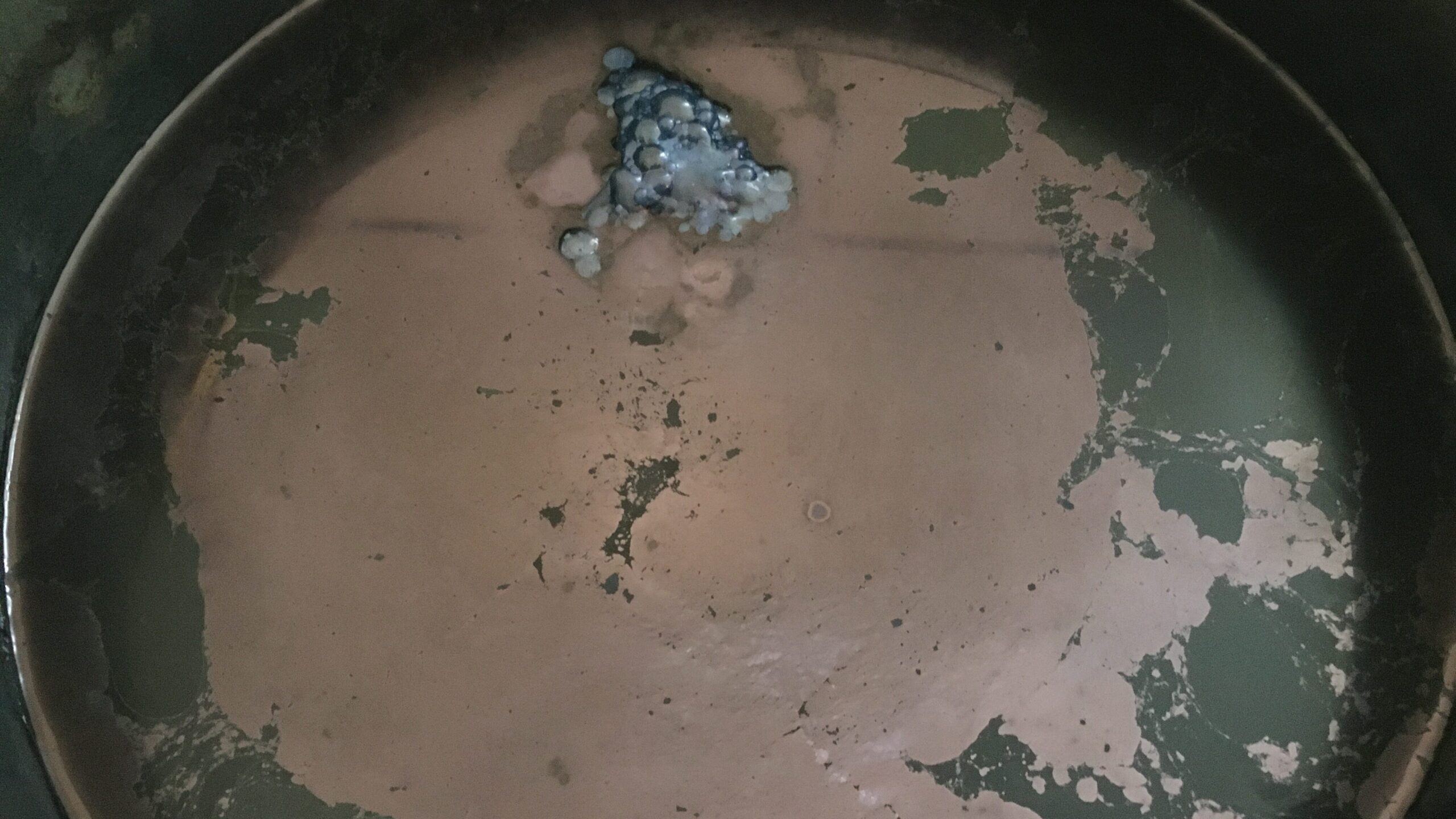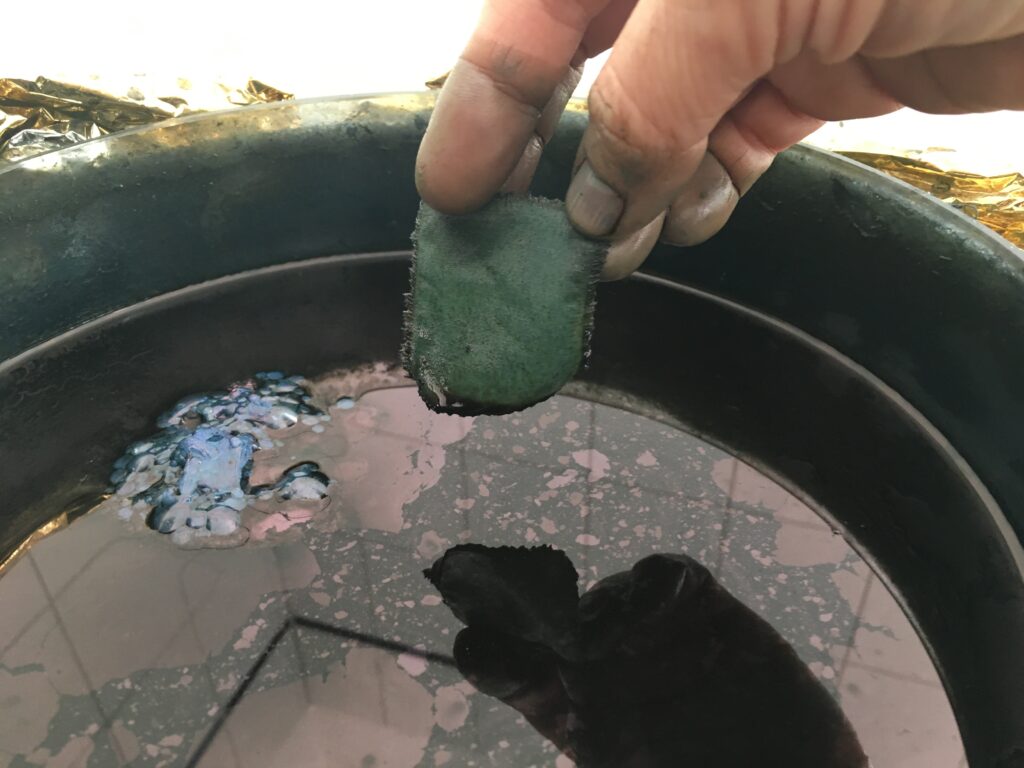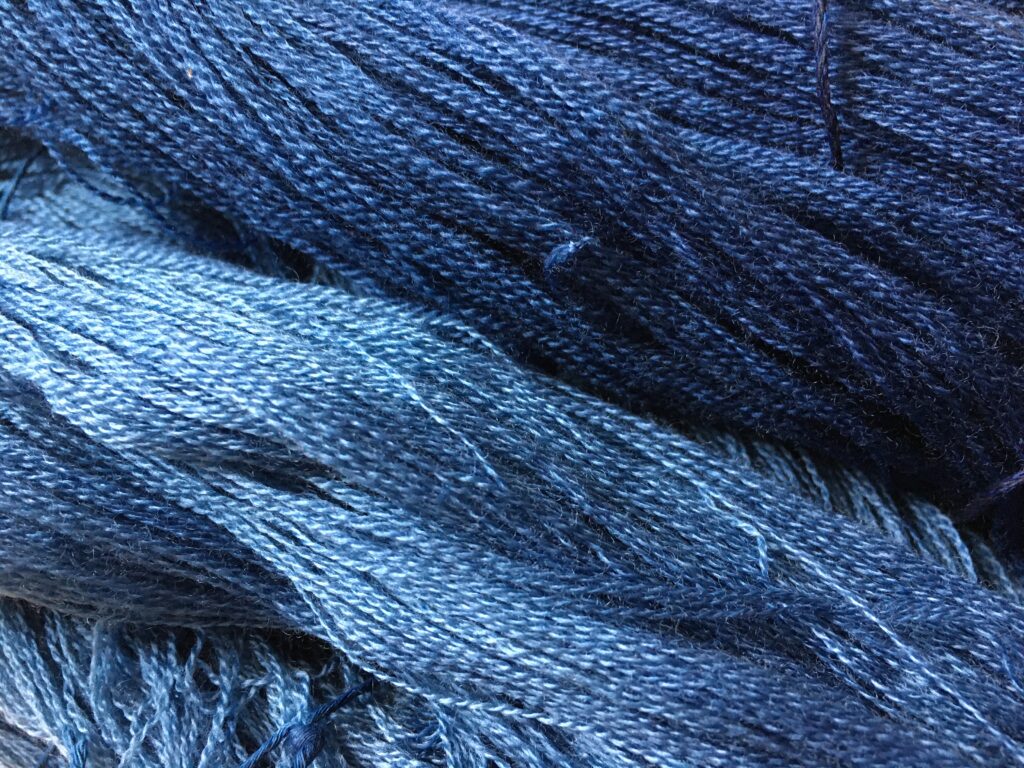
With most natural dyes you put the plant in water and the colorant dissolves into the water and you have a dye bath. But indigo, does not dissolve in water. On its own, the pigment will behave like a fine sand. It will remain solid in water. When you try to dissolve indigo in water, it may look blue due to the suspended pigment particles in water but it is not dissolved. If you attempt to dye cloth in this water, the wet indigo will stick to the cloth a little. But once the cloth is dry, the indigo will simply brush off. Indigo will act just like sand that sticks to your wet towel, and it will fall off once dried.
To make the indigo dissolve in water to make dye bath, you need to chemically “reduce” with a reducing agent. This is called the REDOX reaction. The dye-baths of indigo is called Vat (Küpe in German) and it needs these 3 things.
- Indigo
- A reducing agent
- A base (alkali)
You can find a detailed good explanation at Maiwa’s natural dye webstie.
Reducing agent can be chemical, such as Sodium-Hydrosulfite or Thiourea-Dioxide, and can release toxic gas and one has to take care of the disposal of the used vat liquid.
Ferrous sulfate(II) is also used to reduce indigo. Traditional Blaudruck dyers in middle Europe use this method. It is not as toxic as hydro” and “thiox” but it makes a by-product of Gips in the vat liquid, which needs to be removed after some point.
Organic vat proposed by Michel Garcia uses glucose, fructose, flavonoids and Anthraquinones to reduce Indigo. This is included in reducing sugar, very ripe fruit with a lot of sugar and spent dyestuff. You will need to add these materials as they wear off.
Many traditional vat uses bacteria to reduce Indigo. This is often called fermentation vat. The vat is kept warm (20 – 25 degrees) and promote certain types of bacteria to live in the vat liquid. These bacteria produces enzymes that reduces Indigo. The vat has to be “fed” once in a while to keep the bacteria alive. The recipe for feeding the vat varies by regions and it is interesting to compare. The reducing agent will continue to work as long as the bacteria lives.
A base/ alkali for the vat is usually above PH 10. (and for example, water is PH7). Fermentation vats tend to be kept around PH 10-11 depending on the bacteria the vat habitats. Chemically reduced vats can be above PH11.
Calk/ Lime/ Calcium hydroxide/ ca(OH)2 is often used to create and control the PH high alkali water. Many fermentation vat recipes also use pot ash water to create the initial alkalized water, and use calk to control the PH as needed. For fermentation vats, it is important to dechlorinate when using tab water.
When Indigo/Indigotin is successfully reduced in the vat, it becomes Leuco Indigo, which dissolves in water. Leuco Indigo is not blue. When you submerge cloth/yarn in the vat, Leuco Indigo goes into the fiber, and when you pull out the cloth, Leuco Indigo oxidize to Indigotin. It looks like the colour of the cloth changes from yellow green to blue as you hold the cloth in the air. After it is fully oxidized, indigotin is not soluble in water, thus colour is fixed inside the fiber.

